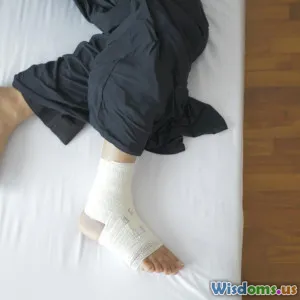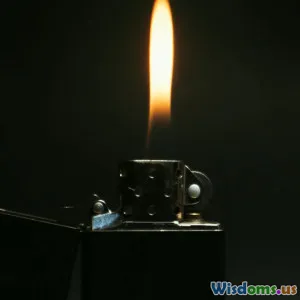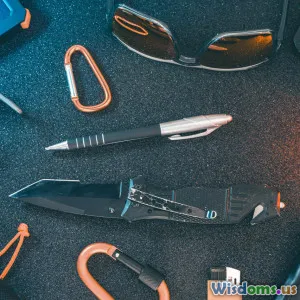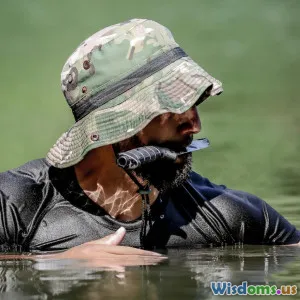
The Essential First Aid Skills Often Overlooked by Adventurers
7 min read Discover essential first aid skills adventurers often overlook to stay safe and prepared in the wild. (0 Reviews)
The Essential First Aid Skills Often Overlooked by Adventurers
Venturing into the wilderness or challenging terrain awakens our adventurous spirit—the thrill, the escape, the discovery. But while packing essentials and maps often dominates a preparer's focus, one critical set of skills is frequently sidelined: first aid.
Many adventurers diligently pack first aid kits but underestimate the importance of mastering the skills required to effectively use those contents. Proper knowledge doesn't just prevent minor injuries from worsening; it can save a life. This article illuminates the essential first aid skills often overlooked by adventurers, guiding you beyond basic cuts and bruises toward comprehensive preparedness.
Recognizing and Treating Hypothermia Early
Hypothermia can stealthily strike even in moderate temperatures—especially in wet, windy conditions. The initial signs—shivering and lethargy—are easy to dismiss, yet catching this condition early is vital.
Why it’s overlooked: Many adventurers focus on heat-related illnesses or trauma, neglecting to recognize hypothermia's subtle early stages.
Critical skills to master:
- Differentiating between mild and severe hypothermia symptoms
- Executing gradual rewarming techniques safely (e.g., insulating from the cold and applying warm, dry clothes)
- Avoiding rapid rewarming that can cause complications
Example: In 2018, a group hiking in the Scottish Highlands ignored early hypothermia signs in one member, leading to hospitalization. Prompt first-aid measures in recognizing and treating hypothermia could have prevented escalation.
Managing Fractures and Dislocations
Accidents leading to broken bones or dislocated joints are prevalent outdoors due to uneven terrain, falling rocks, or unexpected slips.
Why it’s overlooked: Adventurers often seek immediate evacuation rather than stabilizing the injury, unaware proper immobilization improves outcomes.
Essential techniques:
- Identifying fractures versus sprains and distinguishing types of dislocations
- Using improvised splints (sticks, trekking poles, clothing) for stabilization
- Safely transporting the injured without causing further damage
Real-world insight: A 2019 mountain rescue survey found that 40% of outdoor trauma victims suffered from poorly immobilized fractures, complicating medical treatment.
Infection Prevention and Wound Care in the Wild
While scrapes and cuts may seem minor, infections are a significant risk in environments laden with microbes and limited sanitation.
Commonly overlooked aspects:
- Thorough wound cleaning with sterile water or boiled water when sterile saline is unavailable
- Recognizing signs of infection early (redness, swelling, warmth, pus)
- Applying appropriate dressings to promote healing and prevent contamination
Supporting fact: According to the CDC, untreated soft tissue infections can rapidly deteriorate into more serious conditions such as cellulitis or sepsis, risks compounded in remote settings.
Tip: Including antiseptic wipes, antibiotic ointment, and sterile dressings tailored for wilderness use can markedly improve outcomes.
Identifying and Responding to Allergic Reactions
For adventurers, exposure to insect stings or plants can trigger allergic reactions – sometimes anaphylaxis, which demands immediate action.
Reasons for neglect: Some overconfident adventurers underestimate allergic risks or fail to carry epinephrine auto-injectors.
Crucial competencies:
- Recognizing mild vs. severe allergic symptoms: hives, swelling, respiratory distress
- Correct use of epinephrine auto-injectors
- Positioning the person and monitoring for signs of shock until help arrives
Case in point: The 2020 American Camping Association report emphasizes that fatal outcomes from allergic reactions often stem from delayed or improper intervention.
Basic Environmental Illness First Aid Beyond Cuts and Bruises
Altitude sickness, heat exhaustion, poisonous plant exposure, and dehydration frequently arise in adventure settings yet don't always receive focused first aid attention.
Skills often missed:
- Recognizing and responding to early altitude sickness symptoms (headache, nausea)
- Differentiating heat exhaustion from heat stroke and implementing cooling techniques
- Identifying poisonous plants common to an area and treating contact reactions
- Managing hydration and electrolyte balance during extended exertion
Expert insight: Dr. Maria Thornton, a wilderness medicine specialist, underscores that "the ability to preempt environmental illness through prompt first aid is paramount to sustaining safety during an expedition."
Communication and Emergency Protocol Skills
Knowing first aid is critical, but equally important is the ability to communicate emergencies effectively.
Often missed points:
- Clear documentation of incident details for emergency responders
- Understanding when and how to initiate evacuation
- Utilizing satellite communicators or personal locator beacons appropriately
Example: A 2017 hiking incident in Yosemite illustrated how poor communication delayed rescue by several hours, worsening victim conditions.
Ensuring your group practices emergency protocols and communication before heading out enhances overall safety margins.
Conclusion
Adventure demands courage and curiosity, but it also beckons preparation beyond the essentials dogma. Mastering these often overlooked first aid skills equips adventurers not only to react competently in emergencies but also to prevent minor incidents from turning catastrophic.
As Paulo Coelho wisely said, "Blessed is the man who knows the limits of his own strength," and no strength is complete without knowledge and preparedness.
Invest in comprehensive first aid training tailored for the outdoors. Equip your kits not just with supplies but with skills. Your next adventure could be safer—and more rewarding—because of it.
Ready to level up your wilderness first aid? Consider enrolling in a certified wilderness first responder course today and make safety your quest’s foundation.
Rate the Post
User Reviews
Popular Posts




















